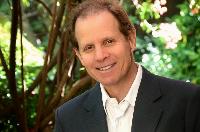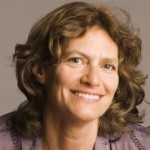Dan Siegel, pediatric psychiatrist,  pioneering interpersonal neurobiologist and all around brilliant guy, has helped revolutionize my understanding of the interconnectedness of yoga/meditation practice and the optimization of mental health. Here, as part of the opening chapter in Healing Trauma, a book he co-edited with Marion Solomon, Dan describes how the human mind, as well as human social groups, can operate as complex systems. (My comments in color.)
pioneering interpersonal neurobiologist and all around brilliant guy, has helped revolutionize my understanding of the interconnectedness of yoga/meditation practice and the optimization of mental health. Here, as part of the opening chapter in Healing Trauma, a book he co-edited with Marion Solomon, Dan describes how the human mind, as well as human social groups, can operate as complex systems. (My comments in color.)
“One exciting idea that emerges from the application of complexity theory to mental processes is this: Systems that are able to move toward maximal complexity are healthy systems. They are the most stable, adaptive, and flexible. (Sthira sukham asanam!) What a wonderfully concise definition of well being. Mental health can thus be defined as a self-organizational process that enables the system – be it a person, relationship, family, school, community, or society – to continually move toward maximal complexity.” (Here we see an obvious obstacle for the world community and the US. If more complexity is seen as being too scary, too foreign, there is liable to be a regressing in overall mental health.)
Here Dan articulates seven principles of complexity theory that are relevant to mental health and our yoga practice. Find out in your own practice how these ideas may be helpful. Italics are Dan’s way of zeroing in on the key phrases.
“1. Complex systems have a self-organizational process that emerges out of the nature of the properties of their component parts. (Cells, organs, neurons, blood vessels, bones etc, as well as belief systems, teachings, new ideas.)
2. The flow of states of the system has recursive features, both internal and external, that reinforce flow in a certain direction. (Movement of blood, breath, peristalsis, or the MCAS testing and teaching procedures.)
3. Both internal and external constraints, or features, determine the course of change or trajectory of the system over time. ( How you practice moves the system. Are you opening to more complexity and novelty, just repeating the past, or heading over the cliff (global warming?))
4. Self-organizational processes tend to move the system toward maximal complexity.
5. The ability to create maximally complex states offers the most stable, flexible and adaptive states to emerge. Complexity is a state of the system that flows between sameness, rigidity, order and predictability on the one hand and change, randomness, chaos and unpredicitablity on the other. (tamas, rajas and sattva)
6. Complexity is achieved by the balancing of the two fundamental processes of differentiation and integration. (Can you differentiate your sacrum from the pelvis?, the liver from the heart, the erector spinae muscles from the multifidi?) Can you get them to work together once differentiated? Lots more choices here! .. How about ‘Awareness’ and what arises in awareness?)
7. The inability of the system to move toward complexity can be seen as a form of “stress” to the system. (Check out the current political scene.)
When you begin to recognize the you are inextricably intertwined with the “Whole”, you can draw upon the complexity/intelligence of the both the cosmos and cells to help you heal and thrive.




